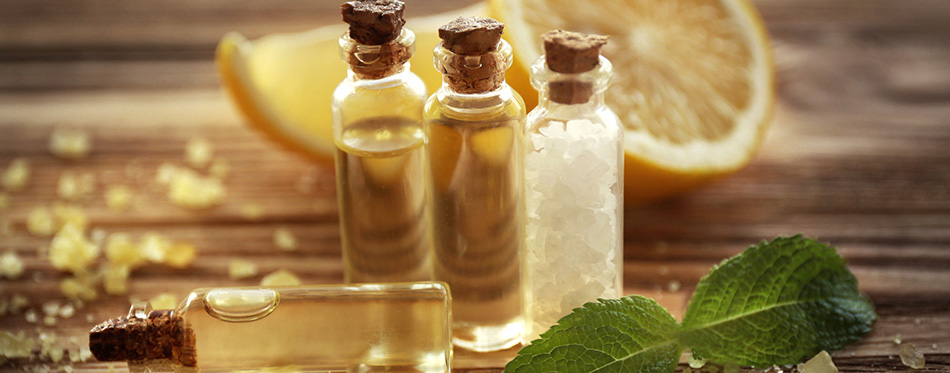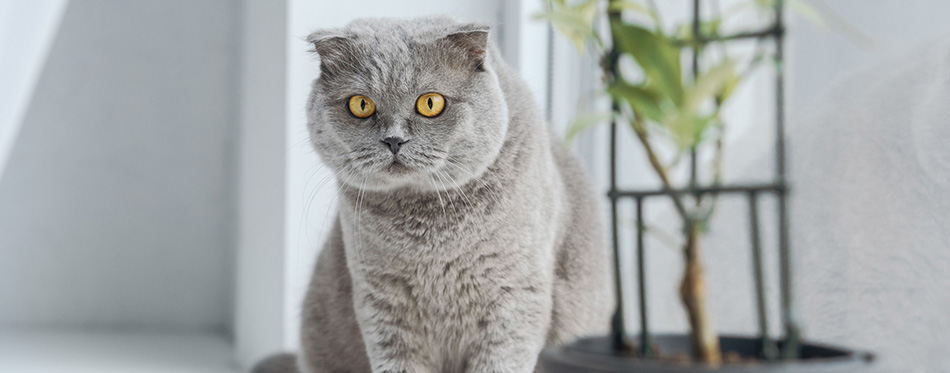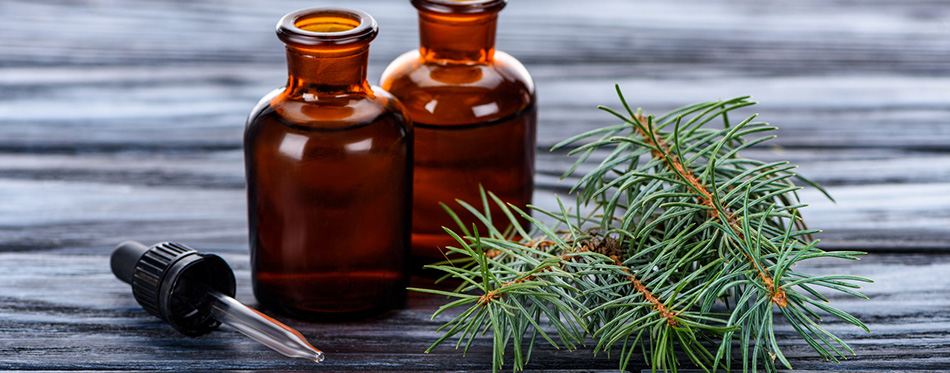It is difficult to provide a definite answer to the question whether essential oils are safe for cats or not. It is like asking if medicine is safe. While the use of essential oils in humans is widespread, information on the safety of these products on pets like cats is sparse. More often than not, the pieces of information are contradictory, too. So, to say that essential oils are safe for cats is like saying any cat can use it without any untoward effect. Saying that it isn’t safe robs these pets of the opportunity to benefit from these substances.

The Issue of Essential Oil Toxicity
The main issue in the use of essential oils on cats is the inability of the feline liver to perform “gluconuridation”. This is a critical step in the metabolism or processing of different compounds. If the liver is unable to process these compounds into their component molecules, toxicity can arise.
It is important to realize that essential oils are highly concentrated plant volatile oils. Manufacturers extract the volatile oils from plant sources and concentrate them through the process of cold pressing or distillation.
There are two compounds in essential oils that the cat’s liver may not be able to metabolize or break down, resulting in toxicity.
For a wider selection of choices, check out our guides on Flea Treatments For Cats and Cat Vitamins.
Phenols
These aromatic organic compounds are known for causing chemical burns. When exposed to delicate membrane tissues, they can be corrosive. For instance, they can sting the eyes, irritate the skin, or produce inflammatory changes in the respiratory tract. These effects are secondary to the protein-degenerating effect of phenols. This is also the reason why humans have to dilute essential oils to reduce the concentration of phenols in their diffusers.
Monoterpene Hydrocarbons
Many essential oils contain monoterpene hydrocarbons or terpenes. It is a compound that is very common in food, pharmaceutical, cosmetics, and biotechnology products. Unfortunately, these compounds are also toxic to cats when applied on their skin or ingested.
Because the liver is unable to break down phenols and terpenes, these compounds will continue to circulate in the cat’s blood. Unfortunately, since the blood will keep returning to the liver for detoxification, the liver will get exposed to these substances over and over. It will keep on trying to metabolize the compounds so as to render them harmless. In doing so, it strains the liver and can lead to damage. Over time and if the condition goes unchecked, the liver may fail.
Liver failure can lead to the accumulation of toxic substances in the blood such as ammonia and other nitrogenous wastes. Many of these substances can cross the blood-brain barrier, resulting in seizures. Unchecked severe seizures can compromise blood flow to the brain, which can lead to the death of the cat.
Mechanisms of Feline Exposure to Essential Oils
There are many ways in which a cat can get exposed to essential oils. What is very critical to understand is that different essential oils have varying concentrations of phenols and terpenes. For example, cinnamon, oregano, clove, and thyme have high concentrations of phenols. On the other hand, petigrain, pine, and cajeput essential oils are rich in terpenes.
There is also the issue of proper dilution. The essential oils that humans use are often diluted in a base or carrier oil. These base oils can include coconut oil, olive oil, grapeseed oil, and sweet almond oil, among others. These carrier oils can dilute the essential oils, thus lowering the concentration of toxic substances.
However, there are instances when humans do not observe the correct dilution. It can be more concentrated than usual. Moreover, the dilution formula of essential oils is for human use, not for pets. As such, it may be safe for us to inhale the essential oil from the diffuser, but we can never say the same thing about our pets.
Most of us use passive diffusers at home. These facilitate the slow evaporation of the essential oil. There are many types of diffusers. They include reed diffusers, heat diffusers, personal evaporative diffusers, and motorized diffusers. Because the essential oil evaporates into the room air, there is a chance that the cat will inhale these substances. The compounds can irritate the lining of the cat’s respiratory tree, which can lead to inflammation as manifested through coughing.
Unfortunately, if the essential oil used is one with high concentrations of toxic substances or if it was not diluted in the correct manner, more serious problems can arise. The essential oil vapors in the air can irritate the cat’s eyes and nose, leading to watery and red eyes as well as runny nose. The animal may also experience a burning sensation in its nose and/or throat. If the throat gets irritated, it is possible for the animal to experience nausea and make it drool. In some cases, cats can also vomit and have difficulty breathing.
A cat that is having difficulty breathing will often present with very rapid respirations, coughing, noisy breathing, and panting. If the animal coughs, most pet parents can mistake it for an attempt to remove a hairball. To differentiate feline cough as a result of essential oil toxicity from hairball-related cough, it is important to look at the cat’s stance. If it is because of essential oil toxicity, the cat will often crouch very low to the floor or ground. You will also not see any movement in its abdomen.
It is also possible that the diffuser will tip over and spill the oil onto the floor. Cats can lick this and cause gastrointestinal irritation. The same diffuser can also tip over and spill its content onto the cat. If the animal licks its coat, then it will be able to ingest the toxic substances, too.
Newer models of essential oil diffusers do not evaporate the volatile oils. Instead, they form mists or microdroplets. Examples of these include ultrasonic diffusers and nebulizing diffusers. While it is easy to think that these gadgets are a lot safer than passive diffusers, they can still pose a threat to the cat. If the animal gets within range of the aerosol limits of the diffuser, there is a chance that the microdroplets will fall on the cat’s fur. It can then lick it and cause problems.
There is also the danger of the essential oil getting absorbed in the cat’s skin. It enters the bloodstream and can cause a number of symptoms. The cat can show vomiting, drooling, wobbly gait, tremors, low heart rate, respiratory distress, and low body temperature. It can also damage the liver and cause liver failure. Again, everything depends on the type of essential oil used and its degree of concentration.
Cat-Safe Essential Oils
There are essential oils that are safe to use both on cats and around them. However, one has to observe the correct dilution of these essential oils. Do not ever use human-grade essential oil dilutions on cats. Here are some of the essential oils that are “safe” for some of our feline friends.
- Spearmint Oil
Some pet parents use spearmint oil to help address their cat’s nausea and diarrhea. It can be a beneficial aid in managing gastrointestinal complaints in cats.
- Frankincense Oil
Known for its ability to alleviate stress while also improving sleep, frankincense oil can be safe to use on and around cats, too.
- Cardamom Oil
This oil can help mitigate the symptoms of feline heartburn. It may also help in improving their appetite.
- Helichrysum Oil
Helichrysum has anti-inflammatory, antibacterial, antifungal, antimicrobial, and antioxidant properties. It can help in the management of minor bleeding in pets as well as for enhancing skin regeneration.
- Fennel Oil
In cats, fennel oil can be valuable for its ability to remove toxins and excess fluids between cells.
- Cedarwood Oil
Not only is cedarwood oil safe for cats, it is also valued for its anti-flea properties. It can be a great flea repellent.
- Rosemary Oil
The ASPCA lists rosemary as one of those oils that is safe around pets. It also has anti-flea properties.
Clary Sage Oil
Like rosemary, the ASPCA deems clary sage oil to be safe for cats. Anecdotal evidence shows that this essential oil can be beneficial in calming cats.
The American Society for the Prevention of Cruelty to Animals also lists the following plants (not essential oils) that are “safe” to cats.
- Basil
- Cinnamon
- Jasmine
- Lemon balm
- Easter lily cactus
- Thyme
- Sage
- Rose
We have to emphasize that these essential oils are in no way “safe” for ALL cats. The reason why these essential oils are on this list is because of the many reports of pet parents saying they have not observed any untoward incidents related to the use of the oils. Again, moderation is key. Your vigilance is also critical. Hence, whenever you are using any of these oils, it is very important to keep an eye on your cat for the first 48 hours.

Essential Oils that are Harmful to Cats
While there are essential oils that can be “safe” on and around feline pets, there are also those that should NEVER be used on or around them. These essential oils contain high concentrations of toxic compounds that can endanger your pet. Here is a list of the essential oil products that are toxic” to felines:
- Clove
- Wintergreen
- Birch
- Oregano
- Eucalyptus
- Tea tree
- Peppermint
- Thyme
- Citrus-based oils
- Anise
- Camphor
- Juniper
- Pennyroyal
- Mustard
Along with these essential oils, the ASPCA also lists the following plants as toxic to cats.
- Daffodil
- Onion
- Oregano
- Tulip
- Tiger lily
- Gardenia
- Iris
- Poinsettia
You may also like our articles on Probiotics for Cats and Cat Calming Sprays.
Important Reminders on Using Essential Oils for Cats
Whenever using essential oils for yourself or on your cat, it is very IMPORTANT to remember the following key points.
- Take Your Vet’s Advice
Different cats can react in different ways to the same type of essential oil. As such, it is important to listen to your veterinarian’s advice. He will have to make a very thorough assessment of your cat to determine if a particular essential oil is safe for it or not. Moreover, he can advise you on how to give the essential oil, whether by mouth or on its skin.
- Only High-Quality Essential Oils Matter
Only buy high-quality essential oils from reputable sources. You will never know what other substances are present in cheap, imitation products. These substances can bring more harm to your pet. You may save a few dollars but you are exposing your cat to greater risks.
- Stay Away from Essential Oils that Can be Toxic to Your Cat
There are plants and essential oils that are toxic to cats, especially when given in large amounts. It is best to steer clear of those products that authorities identify as “unsafe” for pets.
- Be Precise in Dilution Measures
There are no standard dilution measures for essential oils across all types. Everything depends on the essential oil. Some may require a dilution of 20 parts carrier oil and 1 part essential oil. Remember, these dilution formulations are for human applications. If you have to use the essential oil on your pet, then you have to dilute the oil further.

- Be Vigilant
Whenever you are using essential oils, it is imperative to keep a watchful eye on your cat. If you notice any symptom a few hours to a few days after initiating the essential oil therapy, it is best to institute first aid measures. It is also critical to bring the cat to the vet.
- Respect Your Pet’s Wishes
Some cats do not like the strong scent of essential oils. If it attempts to go out of the room while your diffuser is on, then you have to respect your cat. Allow it to go out of the room. Do not force it to stay. Doing so can cause unnecessary stress on the animal and expose it to the dangers of essential oils.
There are some essential oils that are “safe” for cats, provided one observes certain precautionary measures. As a general rule, however, it is best to refrain from using any essential oil product whenever there is a cat in the household.
Source:
- Cats and Essential Oil Safety – Tisserand Institute

